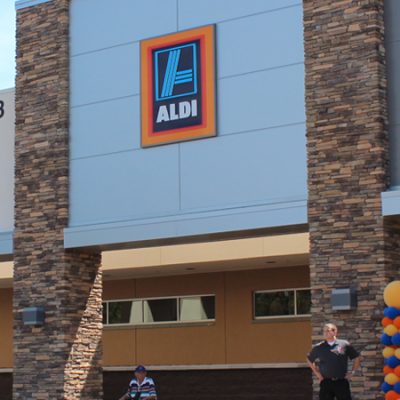Grocery-anchored shopping centers—one of the most popular retail assets because of their resistance to the Internet—have come roaring onto the market in early 2018. According to brokers at Hanley Investment Group, several opportunities for retail grocery centers have come to market in Southern California, mostly thanks to REIT portfolio restructures. In fact, the firm recently brokered the sale of La Verne Courtyard, an 84,368-square-foot shopping center anchored by ALDI and Orchard Supply Hardware. The property price tag was not disclosed, but CoStar reported the asset traded hands for $20.7 million. While there are more opportunities to buy a grocery-anchored center, the supply still doesn’t match the strong demand for these assets. To find out more about the new supply and how it is impacting the market, we sat down with Hanley Investment Group president Ed Hanley and EVPs Bill Asher and Kevin Fryman for an exclusive interview.
GlobeSt.com: Why is there an increase in the supply of grocery-anchored shopping centers on the market? Kevin Fryman: The market for grocery-anchored centers in infill markets remains strong with interest from both the institutional buyers, private 1031 exchange buyers and foreign investors. So far, this year, we have seen an increase in the supply as sellers recognize that this is an ideal time to sell. However, there still remains limited properties available similar to La Verne Courtyard in both size and quality. Although supply has picked up in 2018 compared to previous years, the recent increase still isn’t as robust to satisfy the overall demand that remains in the grocery-anchored category. The recent uptick in supply can be attributed to the continuation of REITs upgrading their portfolios and selling their non-core assets, interest rate increases volatility, and grocer consolidation. There are currently 39 grocery-anchored shopping centers on the market for sale in California at an average cap rate of 6.43%, per CoStar.
GlobeSt.com: Are you advising your clients to sell now? Ed Hanley: We’re advising our clients to properly evaluate their options based on current market conditions – sell at near peak pricing, but still at a premium in today’s market or refinance and hold long-term at historically low interest rates.
GlobeSt.com: How have buyers responded? Hanley: Overall activity and interest level are up, although less formal offers are being submitted compared to previous years. Demand is still at an all-time high, but buyers are being more selective and cautious based on interest rate risk and more careful evaluation of tenancy based on the impact of the Internet, from companies like Amazon.
GlobeSt.com: With more product on the market, has pricing stabilized? Bill Asher: The increase in product hasn’t had a direct correlation to a stabilization in pricing. The combination of rising interest rates and the impact of the Internet have been more significant factors in overall peak pricing softening since 2016. However, it depends on the location and grocer store sales. Pricing in core markets, such as coastal Los Angeles and Orange Counties remains steady with very little change. Secondary markets with discount grocers, new concepts, second-tier grocers, or grocers that don’t report sales, have seen price adjustments in the last 12-18 months. Per CoStar, in 2017, 52 grocery-anchored shopping centers sold in California at an average cap rate of 6.12%. In 2016, 53 grocery-anchored shopping centers sold in California at an average cap rate of 6.03%.
GlobeSt.com: What is your outlook for the supply levels of grocery-anchored product this year? Fryman: Supply will continue to stay steady or increase. Grocery-anchored investments used to be more of a safe haven for both institutional and private investors. Prospective buyers are starting to more carefully assess selling grocery-anchored centers where the grocer is not the #1 performing store in the market or the grocer has transitioned to a second-tier option in the trade area.

